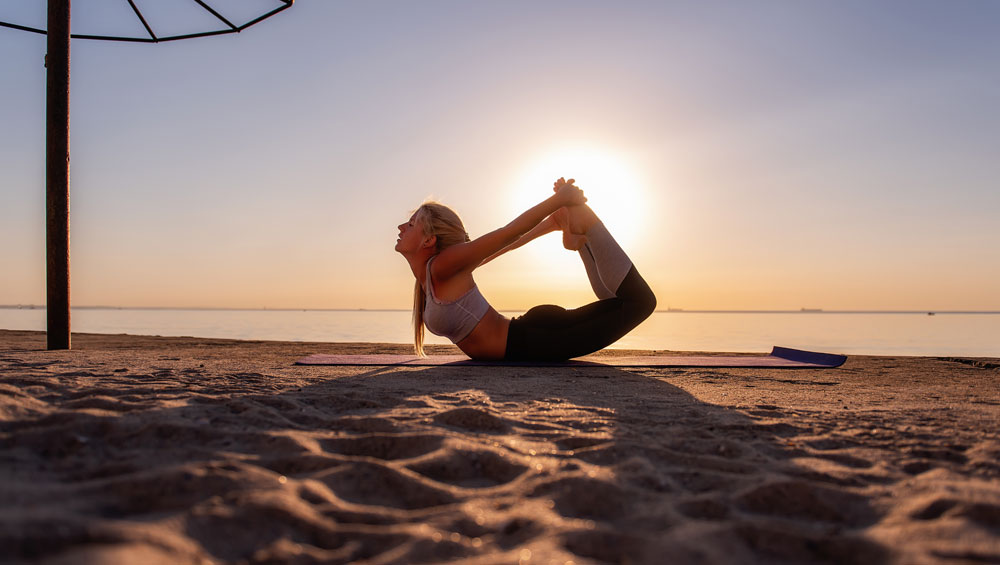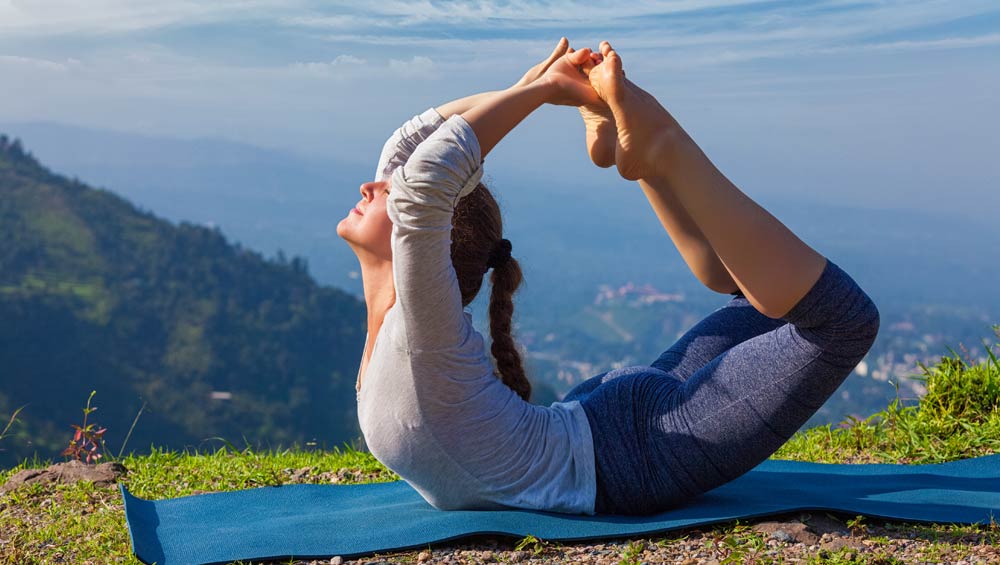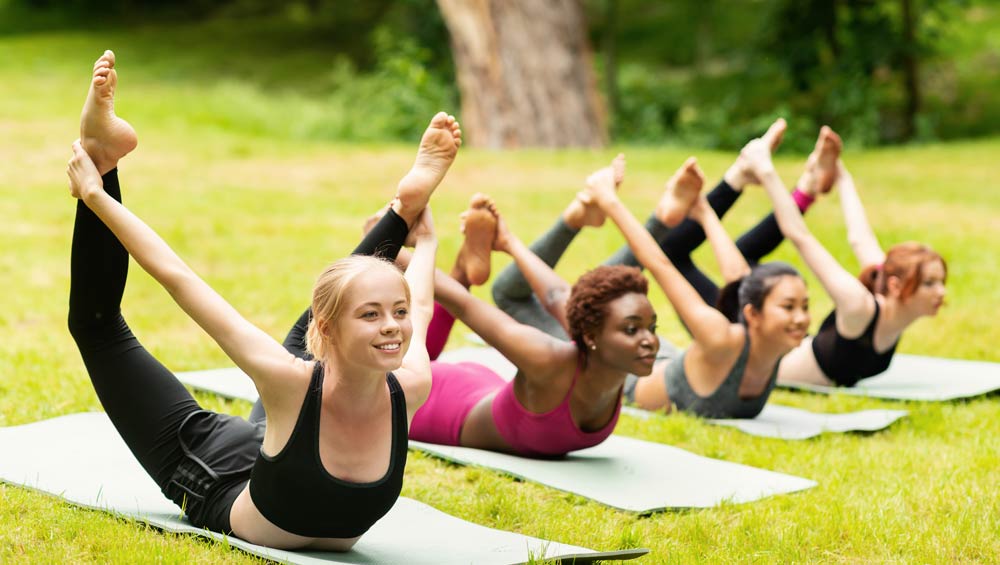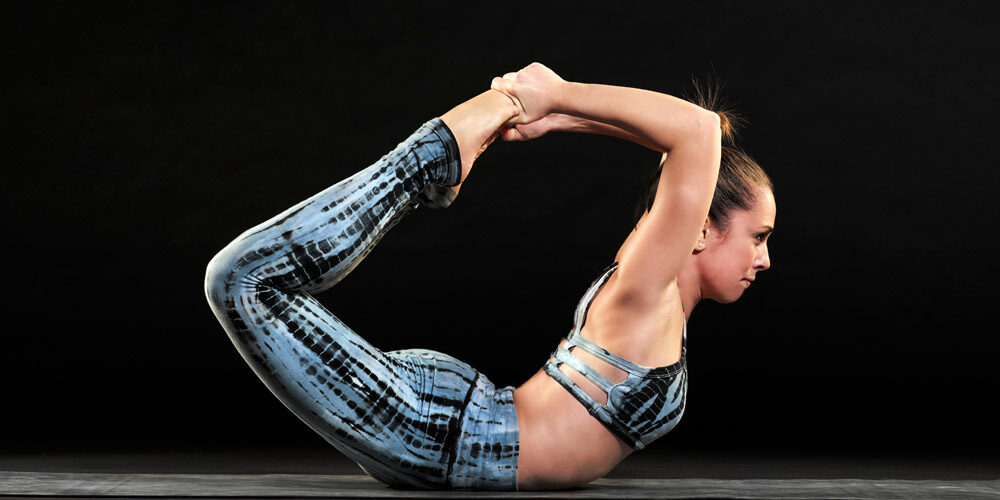No products in the cart.
Benefits of Dhanurasana or Bow Pose And How To Do It properly
Dhanurasana (Bow pose)
Dhanurasana is a heart-opening backbend stretch Asana is included in both traditional and modern yoga. It improves your posture by opening up your chest and shoulders, which helps to offset the hours you spend at your desk each day.
The form of the body in this Asana resembles a “bow,” hence the name Dhanurasana or Bow Pose.
Dhanurasana Meaning

Dhanu is the Sanskrit word for “bow,” while Asana is the Sanskrit word for “posture or pose.”
UrdavaDhanurasana, or Bow Pose, is a Dhanurasana Posture. It is one of the three most significant and popular yoga asanas for back stretching. The two halves of the body lift together in Dhanurasana, properly combining the grasshopper and cobra movements, as well as bending forward and running the plough. The abdomen and thighs constitute part of the bow, while the lower half of the legs and arms serve as the bow’s trunk.
Dhanurasana is unique in that it combines the advantages of Bhujangasana and Salabhasana into one Asana. Our waist and spine benefit greatly from Dhanurasan. Not only that, but this Asana also helps alleviate various stomach-related issues. Furthermore, it sends strong and effective communication to the inside organs.
This is a very significant asana that offers a lot of advantages when done correctly. In this article, we’ll go over the steps of Dhanurasana (Bow Pose), the advantages of Dhanurasana (Bow Pose), and the precautions to take while performing Dhanurasana.
While yoga may lag behind other forms of exercise in terms of increasing tempo, it certainly does not fall behind when it comes to the benefits it provides to the body, both physically and emotionally. It’s no surprise that it’s regarded as the ideal instrument for restoring physical equilibrium. Dhanurasana, commonly known as the bow posture, is a yoga pose that is said to help with tension and anxiety relief, among other things. If you go to a yoga session, your instructor will likely include it in the exercise routine.
It’s simple to do, unlike some yoga asanas that need a lot of concentration. But don’t be deceived by its simplicity; it operates in various ways to stretch and stimulate your body’s numerous functions. As the name suggests, this Asana makes your body into the shape of a bow by lying on your stomach and stretching out while holding your feet with your hands. When you do the Asana, your body looks like a stretched bow, with your hands acting as the strings.
“Resembling an archer’s bow, this position fosters a powerful stretch along the front of the body and a profound opening at the heart center, helping you create an attitude of fearlessness and grace,” according to an article about Dhanurasana on the Yoga International website.
How to perform Dhanaurasana?
1. To begin, find a clean, airy location.
2. Then, on a yoga mat, lie down on your stomach. Keep both hands straight and the distance between your buttocks.
3. Bend your knees and pull your heels up to your buttocks as you exhale. Hold your ankles with your hands while arched.
4. Now, while breathing, lift your chest off the ground.
5. Raise your legs a little higher and lift your ankles with your hands while breathing more deeply.
6. Your knees should not be broader than your hips at this point.
7. Maintain abdominal weight balance while pulling the ankles and keeping the head straight.
8. Depending on your body’s flexibility, you can raise your body even higher.
9. While performing this arching stance, pay close attention to your inhaling and exhaling.
10. Hold this position for as long as you can.
11. To return to the original position, carefully loosen the body muscles and lower the buttocks and thighs to the ground.
12. Lower your body to the ground from the front.
13. Then, using both hands, release the heel. Return to your original position.
Before you do Dhanurasana, there are a few things you should know (Bow Pose)

The best time to practice this Asana, according to experts, is first thing in the morning. Mornings are best because the food has had time to digest and the body has the stamina to do the Asana. If you are unable to practice it in the morning for some reason, you may do so in the evening. However, leave at least a 3-5hour break between practice and supper.
Also Read: Benefits of Bhujangasana or Cobra Stretch and How to do it properly
Dhanurasana’s Top Health Benefits
There are numerous advantages to practising Dhanurasana, and it can help you avoid a variety of diseases. Here are some of them:
1. Bow position promotes digestion by strengthening the stomach muscles. This takes care of issues like indigestion. Many disorders that affect your stomach and the tissues around it can be treated.
2. Regular practice strengthens and extends the muscles of the thighs and buttocks, as well as relieves back pain.
3. Because it expands the chest and raises the respiratory capacity of the lungs, it is considered a useful exercise for respiratory illnesses such as asthma.
4. As you practice this yoga asana, you will notice an energetic sensation in your vertebrae.
5. Consistent practice is beneficial to both physical and emotional well-being. At the same time, the thought process becomes much more exact and distinct.
6. It also helps to relieve joint discomfort throughout the entire body.
7. This Asana can help you increase your body’s flexibility. Especially if you’re suffering from back discomfort as a result of your desk work.
8. Bow Pose clears the respiratory system if you have sinusitis or a problem with mucus or phlegm in the respiratory tract. Breathing speed begins to stabilize with continued practice.
9. The internal organs of the body are massaged by doing this on a regular basis. It aids in the reduction of obesity.
10. Bow Pose enhances the function of the liver and kidneys in the body. It keeps the stomach, liver, kidneys, pancreas, and other organs of the body healthy.
11. It is also used to alleviate facial and body pain.
You can also use Cinnta pain relief oil by Teachers Grace to alleviate any kind of joint or body.
Precautions

1. Beginners should remember not to push themselves too much during Asana. Otherwise, it can result in severe injury.
2. Do not perform this Asana if you have a hernia, ulcers, colitis, or any other gastrointestinal illness. Because this position puts the most strain on the stomach.
4. This Asana is not recommended for pregnant ladies.
5. If you have a medical condition, seek medical advice before performing this Asana.
Quick Facts on Bow Pose
Dhanurasana is the Sanskrit name for this pose.
2. It’s pronounced like this: (dah-nur-AH-sa-na)
Bow Pose is the English name for the third pose.
4. Meaning: Dhanu is the Sanskrit word for bow, while Asana is the Sanskrit word for posture or position.
5. Level of Pose: Beginner
6. Position of Pose: Prone
7. Goals: Primary
Backbend is the eighth pose type.
9. Abdomen, chest, shoulders, and front of hips stretches
10. Back muscles, the backs of your thighs, and your buttocks are all strengthened.
11. Manipura (solar plexus) chakra is stimulated.
Conclusion: –
Dhanurasana, or Bow Pose, improves body posture, stimulates the adrenal glands, stretches the abdomen, chest, shoulders, and front of your hips, and develops the back muscles and the back of your thighs, just like the other backbends. Ex-football players may benefit from it because it opens the thighs, pelvic region, abdominals, and heart.


